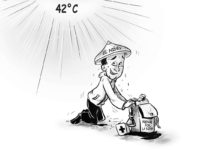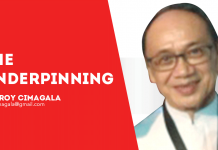
[av_one_full first min_height=” vertical_alignment=” space=” custom_margin=” margin=’0px’ padding=’0px’ border=” border_color=” radius=’0px’ background_color=” src=” background_position=’top left’ background_repeat=’no-repeat’ animation=”]
[av_heading heading=’The ‘move on’ conundrum: the martial law experience’ tag=’h3′ style=’blockquote modern-quote’ size=” subheading_active=’subheading_below’ subheading_size=’15’ padding=’10’ color=” custom_font=”]
BY JOSIAH JAYZON O. MANGANGOT
[/av_heading]
[av_textblock size=” font_color=’custom’ color=’#0a0a0a’]
Wednesday, February 22, 2017
[/av_textblock]
[av_textblock size=” font_color=’custom’ color=’#0a0a0a’]
DURING the campaign period, the then Mayor Duterte of Davao promised to let the late president Marcos be buried at the Libingan ng mga Bayani (LNMB) if elected chief executive. His decision was premised on the idea that the internment shall promote national healing and forgiveness.
This move by the president was supported by the Supreme Court in its decision in G.R. No. 225973 dated Nov. 8, 2016. “In the meantime, the country must move on and let this issue rest,” wrote Associate Justice Diosdado M. Peralta, referring to Marcos’ burial on his conclusion on the court’s decision.
The republic’s chief executive and nine of the members of the highest court of the land agreed that the decision was a stepping stone for the Filipino people to move on. The action of the president and the decision of the Supreme Court were heavily anchored to the existing laws and jurisprudence of the land.
Based on the decision, one can therefore say that Filipinos were told to move on based on the letters and wisdom of the law. But let us not forget that moving on is not dictated by the laws or the authority of the state – it is decided by the heart.
The martial law context
A utopia of fear and disdain immortalized by pain and destruction – this is how the martial law is portrayed by the victims of the era. According to the teachings of history, martial law was one of the darkest periods of the country.
Martial law served as a turning point for the Philippine polity to embrace and treasure democracy as a regime. As a response to a government that took away freedom in the guise of progress and state development, the people rose in unity. With one voice and intention, the people toppled down a dictatorship and added a record to world history. The Filipinos ended an unjust, bloody and a misused display of power in a historical peaceful manner.
This victory, however, can never return the hundreds of lives taken and the thousands of relationships and families broken.
No matter how much development this country had, no matter how many schools and roads established and no matter how grandeur the state had become, to the victims, in the end, what mattered most is how their loss and pain were addressed.
The command of choice
In the government’s perspective, to move on is laid on the context of legality that they believe would ultimately lead to acceptance and thus unity and progress. To the victims, to move on is to cut an already bleeding heart – it is emotional and personal.
The difference in perspectives leads to a riddle whether or not there will ever be a moment when victims, can say “we moved on.”
In the end, the decision is with the people. No matter what the government does, court decisions and laws promulgated, moving on will remain to be an option only the people, particularly the victims, can decide on. Not the government.
But the question remains. When? And how?/PN
[/av_textblock]
[/av_one_full]



